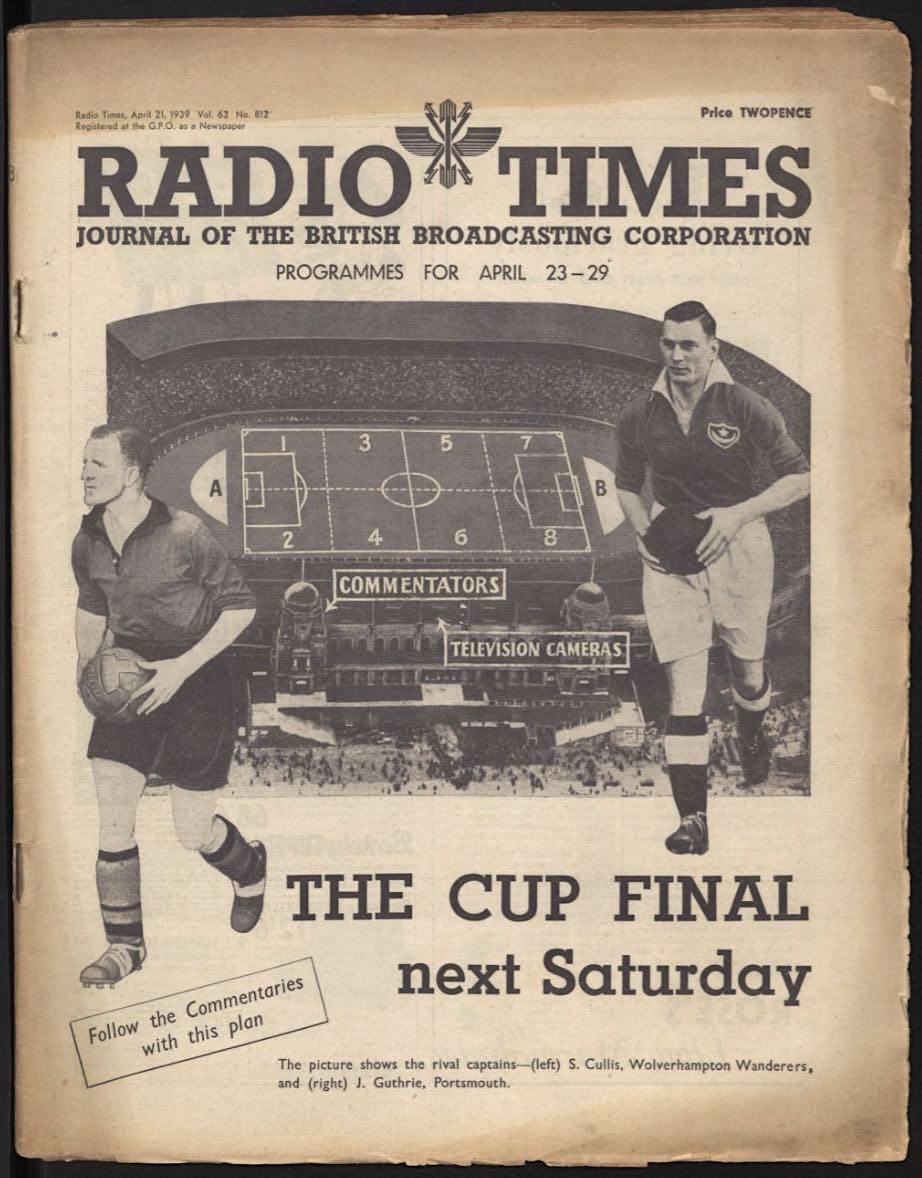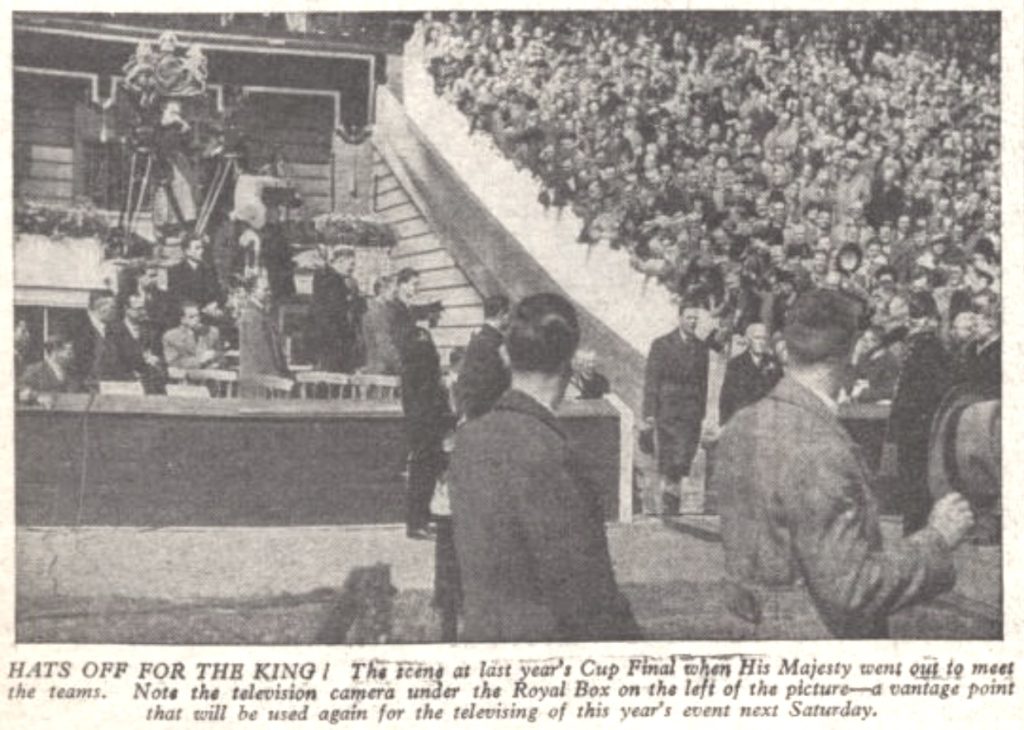OTD in early British television: 29 April 1939

John Wyver writes: Saturday 29 April 1939 was some way off the heady days of my youth when FA Cup Final day was one of those rare and much-anticipated occasions when television began early on a Saturday morning. But already this was the medium’s third big match, starting at 2.40pm with community singing and the arrival of the King, and running through until closedown at 4.45pm.
Television this year earned a rare pre-war notice on the cover of Radio Times (above), with the position of the cameras pointed out in a helpful graphic that also included the ‘zonal’ marks of the 8 numbered areas of the pitch. These were to help listeners to the radio commentary to visualise the game, with one voice constantly noting which area the ball was in.
‘Two cameras will be installed just above the royal box,’ ‘The Scanner’ informed Radio Times readers, ‘and a third one well below it, on ground level. This trio should easily suffice to keep the whole of the game in the picture.’
As ‘The Scanner’ continued,
I think this year’s Cup Final should be better than last year’s — I mean from the television point of view, of course. For one thing viewers will not have to rely on the “sound” commentary as they did last time; George Allison will describe the play specially for the television audience.

In 1938 the whole of the game had been televised, but a sound breakdown meant that initially viewers were regaled with music as an accompaniment to the pictures, before the switch was then made to the radio.
Coverage in 1937 had been much sparser, not least because the BBC’s mobile control room was still a week or so away from being operational. (It would be ready, just, for the Coronation procession on 12 May, which will of course be the focus of a future post.) Instead, ‘lookers-in’ were treated to two 3-minute and one 4-minute broadcasts during play, with the National Programme commentary accompanied by thezonal diagram on-screen.
By 1939, in the wake of the Boon-Danahar fight that had been relayed to three cinemas, there was considerable speculation that the Cup Final might similarly be shown on cinema screens. The Football Association, however, firmly rejected this possibility, and informed the BBC that coverage could only proceed on condition that there was no large-screen rediffusion. If there was piracy, the FA demanded, the BBC had to take legal action. All that the BBC could reply was that it would take whatever action lay within its power.
Regretting the FA’s decision, The Journal newspaper looked forward to future finals:
The time may come when the Final will be worth many thousands of pounds to the FA in film television rights alone, and it might then be possible to arrange for the match to be played on a Saturday morning or possibly the early evening when other teams are not engaged.
A Cup Final will always attract its crowd, however much television develops.
As for the 1939 game, Portsmouth beat Wolverhampton Wanderers 4-1, despite Wolves being clear favourites. See the Pathé Gazette coverage, with astonishing crowd shots…
Leave a Reply